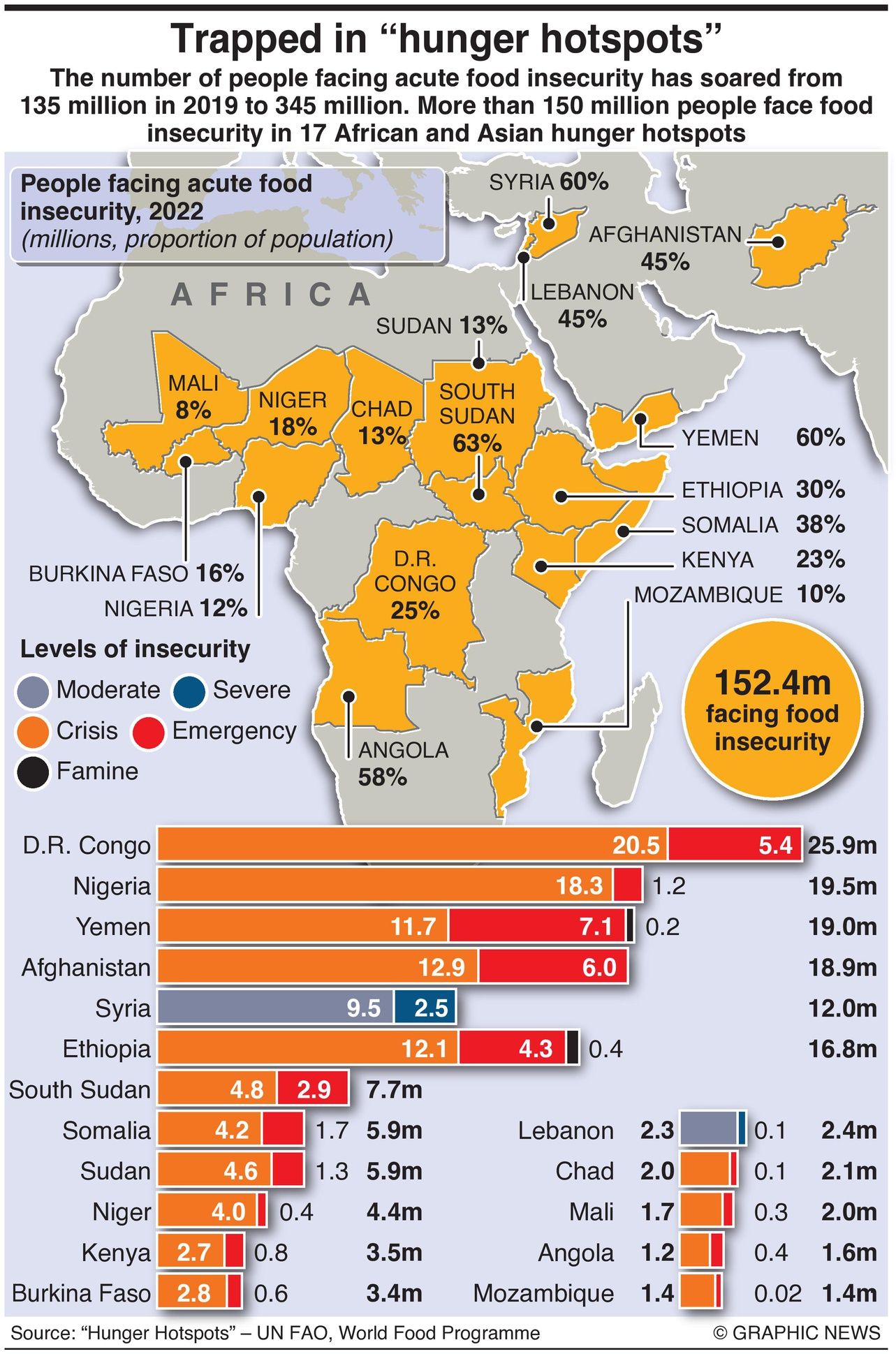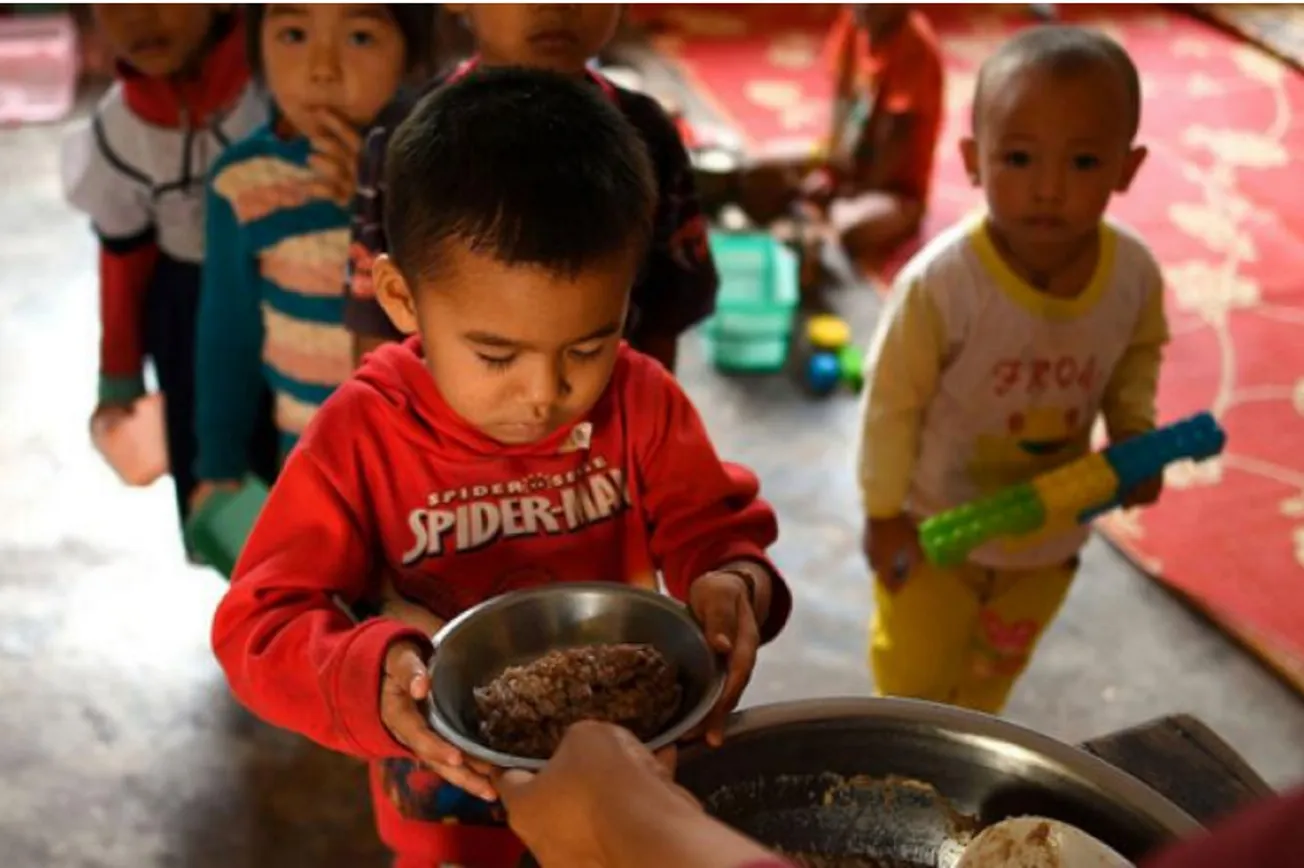The number of people facing acute food insecurity has soared from 135 million in 2019 to 345 million. More than 150 million people face food insecurity in 17 African and Asian hunger hotspots alone.

Extreme weather and conflict drive acute hunger through the Sahel, Central African Republic, South Sudan, and eastwards to the Horn of Africa, Syria, Yemen, and Afghanistan.
The World Food Programme (WFP) is cutting individual rations to reach more people in Nigeria, South Sudan, and Yemen. “This is tantamount to taking from the hungry to feed the starving,” says the WFP.
The impacts of droughts, heatwaves, and floods are one of the leading causes of hunger, destroying crops and agricultural land, decimating livelihoods, and wreaking havoc in vulnerable communities, the WFP states.
Russia’s suspension of an UN-brokered grain deal exacerbates the threat of surging food prices. The impact could be particularly severe in the Horn of Africa, where civil war, climatic extremes, and the economic disruptions of the Covid-19 pandemic have worsened already acute food shortages. In Ethiopia, a two-year civil war has left an estimated 4.3 million people facing acute malnutrition, while in war-torn Yemen, this rises to 7.1 million.
“Targeted humanitarian action is urgently needed to save lives and livelihoods in the hunger hotspots. Moreover, in six of these hotspots -- Afghanistan, Ethiopia, Nigeria, Somalia, South Sudan, and Yemen -- humanitarian actions are critical to preventing starvation and death,” the Food and Agriculture Organization says in the hunger hotspots report, co-authored by the WFP.
Please share with anyone who would benefit from the tippinsights newsletter. Please direct them to the sign-up page at:
https://tippinsights.com/newsletter-sign-up/








